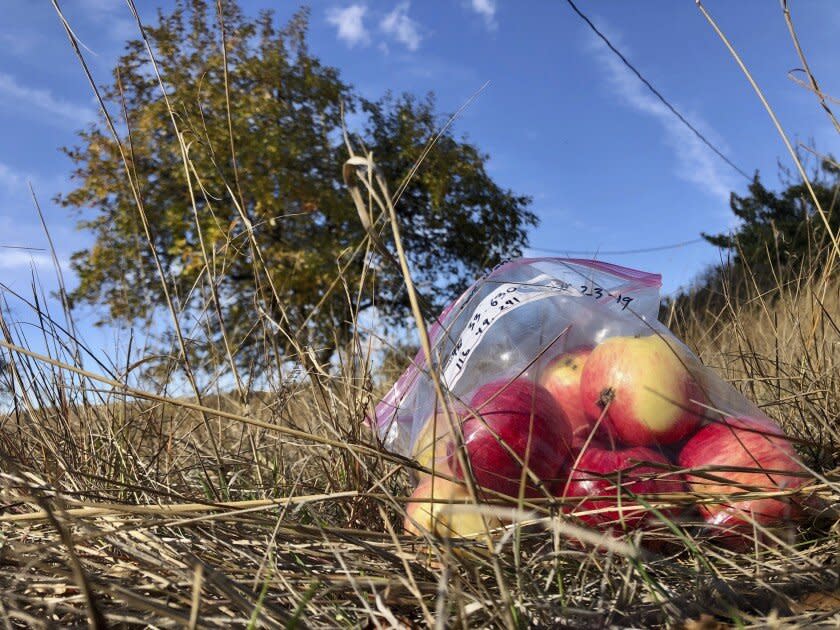Two Volunteers Discovered 10 Pioneer-Era Apple Varieties in the Pacific Northwest
A Vietnam War veteran and former FBI agent are using their retirement for a one-of-a-kind treasure hunt. EJ Brandt and David Benscoter, who are amateur botanists and founders of The Lost Apple Project, search the Pacific Northwest region of the United States for heritage apple trees.

Gillian Flaccus / Associated Press
To search for the heritage apples, Brandt and Benscoter scourer the terrain on foot, logging hundreds of miles searching for ancient and forgotten breeds, the Associated Press reports. Using newspaper clippings, country fair records, and property maps, the pair can determine who purchased an apple tree and when the purchase occurred. They share their findings with the Temperate Orchard Conservancy in Oregon, where the collected apples are sent for study and identification. The team recently found 10 new varieties, adding to the 13 heritage apples that they previously discovered.
Related: A New Apple Variety Is Hitting Store Shelves This Fall
"It was just one heck of a season. It was almost unbelievable. If we had found one apple or two apples a year in the past, we thought we were doing good. But we were getting one after another after another," said Brandt. After discovering the ten new varieties, Brandt and Benscoter sent their findings to the conservancy, where expert botanists compared the apples to watercolor illustrations created by the United States Department of Agriculture in the 1800s and 1900s, as well as botany textbooks. The new varieties include the Sary Sinap, an ancient apple from Turkey, the Streaked Pippin, which may have originated as early as 1744 in New York, and the Butter Sweet of Pennsylvania, a variety that was first noted in a trial orchard in Illinois in 1901.
"When I find an apple that's lost, I want to know who homesteaded it, when they were there, who their children were, when they took their last drink of water," Brandt told AP. "We cannot afford to lose the name of even one of these landowners." The pair diligently notes where the trees were located using GPS tracking and tag the trees before bagging and sending the apples to the conservancy.
The Lost Apple Project raises about $10,000 each year to fund the team's travel costs, shipping costs, and funds needed to identify the apples.

 money
money 